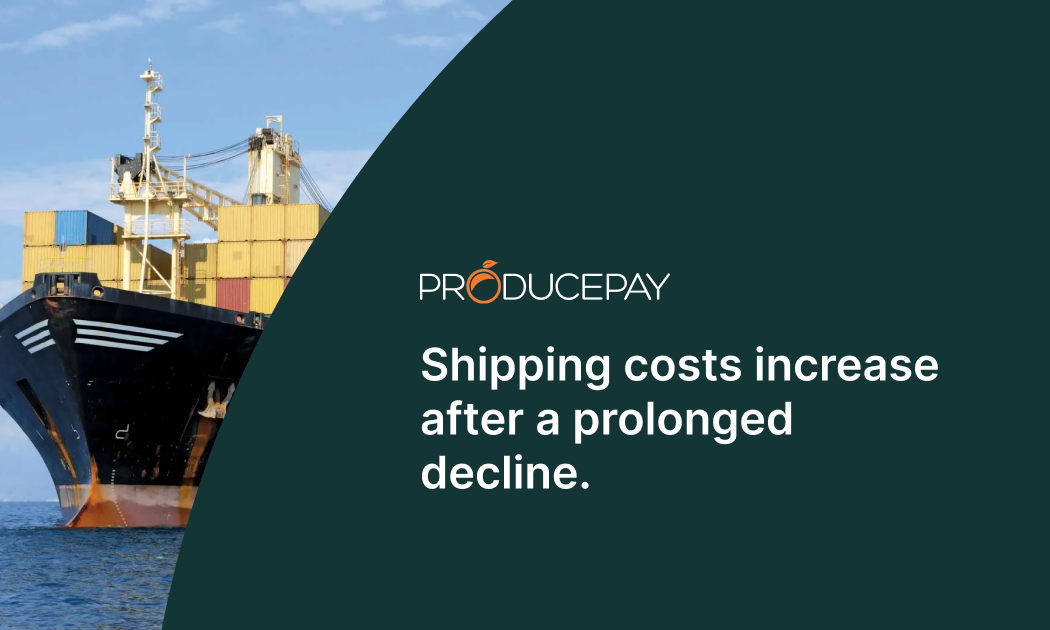
Shipping costs increase after a prolonged decline.
Due to the COVID-19 pandemic and other factors, the shipping industry has experienced significant cost fluctuations over the past few years.
Impact of the pandemic on costs
The COVID-19 pandemic left an indelible mark on the shipping industry. In the early months of the crisis, the urgent need for essential goods, along with logistical congestion and labor shortages, led to a sharp cost increase.
This surge in demand resulted in unprecedented price peaks in September of 2021. Over time, as the situation gradually stabilized, costs found a new equilibrium. A period of rate reductions eased the pressure on goods inflation, establishing a framework of relative stability.
Since the outset of 2022, shipping rates have displayed a consistent downward trend, bringing certain voyages, such as the China-U.S. West Coast trade rate, back to pre-pandemic levels.
The end of a 16-month cost downturn
The 16-month downward trend in freight costs came to an end in 2023, marking a potential change in market dynamics. Data provided by Drewry reveals an 11.8% increase in container shipping rates during the week of August 3, 2023, marking the most significant inter-week surge since June 2021.
Rates continued to increase in the subsequent two weeks, although August’s final two weeks saw a slight dip. Despite this minor setback, the data signifies the end of the descending trend, underscoring the volatile nature of the shipping industry.
Economic implications of escalating costs
Escalating shipping costs hold substantial implications for the global economy. These increases contributed to goods inflation during the pandemic, subsequently affecting consumer prices.
While rates have reverted to levels akin to those before the pandemic, concerns about inflation persist, and abrupt cost spikes can significantly impact economic dynamics, prompting businesses to respond with price increases or cost reductions elsewhere to maintain profitability.
Outlook for the rest of the year
As shipping costs rebound, the outlook for seaborne trade and the overall economy remains mixed. Analysts and industry experts are predicting a stronger second half of 2023 due to the anticipated consumer goods spending recovery.
With spending patterns returning to normal and inventories shrinking, shipping demand is expected to surge. However, this positive outlook carries an important caveat: the economy must avoid a “hard economic landing.”
Key economies, especially the United States, must maintain a sustainable growth trajectory to support demand and trans-Pacific trade. Any recession or significant economic slowdown could adversely affect the demand for goods and consequently drive up costs. Moreover, geopolitical uncertainties and trade tensions can also influence international trade dynamics and, in turn, prices.
Emphasis on adaptation and foresight
Companies and economic stakeholders must prioritize adaptation and foresight in this ever-changing environment. Adjusting business strategies and logistics operations in line with shifting conditions is paramount for maintaining profitability and competitiveness.
Furthermore, companies should consider diversifying their suppliers and shipping routes to mitigate the risks of sudden cost increases.
This is where ProducePay’s Marketplace comes into play. Our platform offers an extensive network of strategic trading partners, enabling you to diversify your suppliers and trade securely. Discover how ProducePay can help grow your network and ensure a consistent flow of fresh produce throughout the year!
Sources: Fresh Fruit Portal, Statista, ING.
